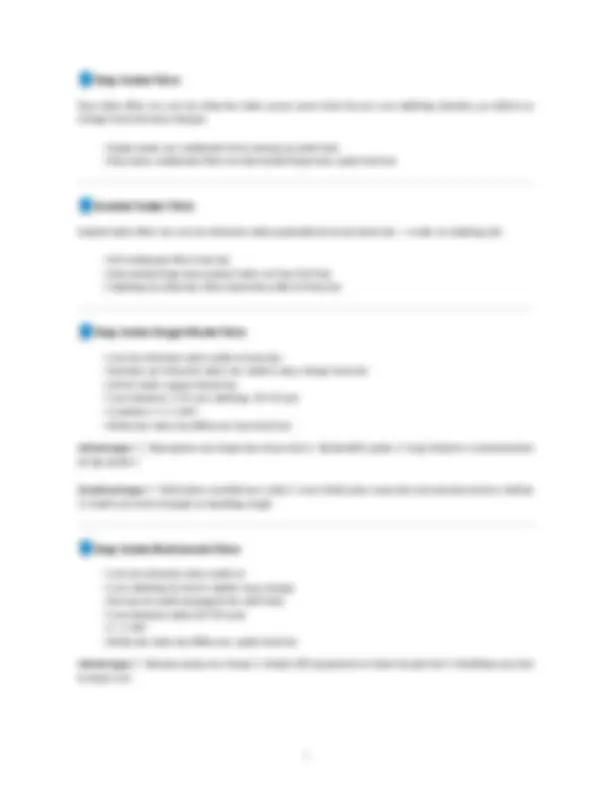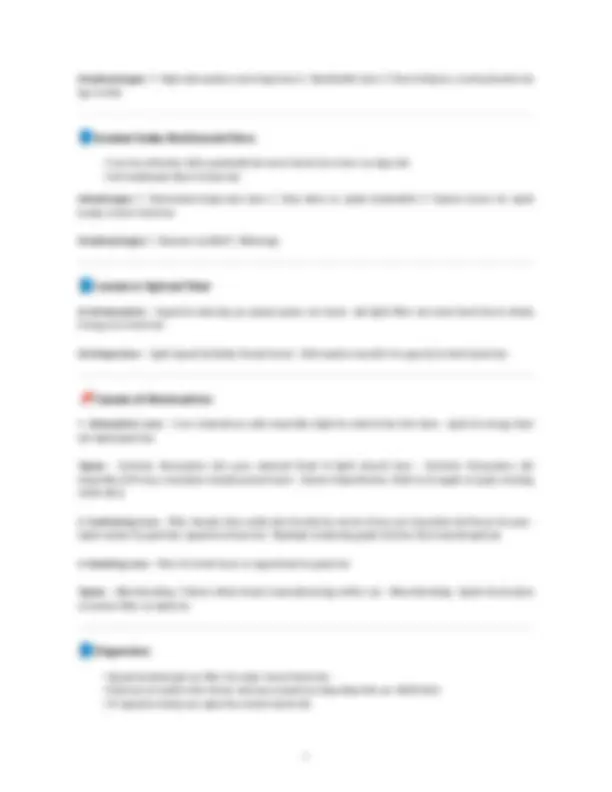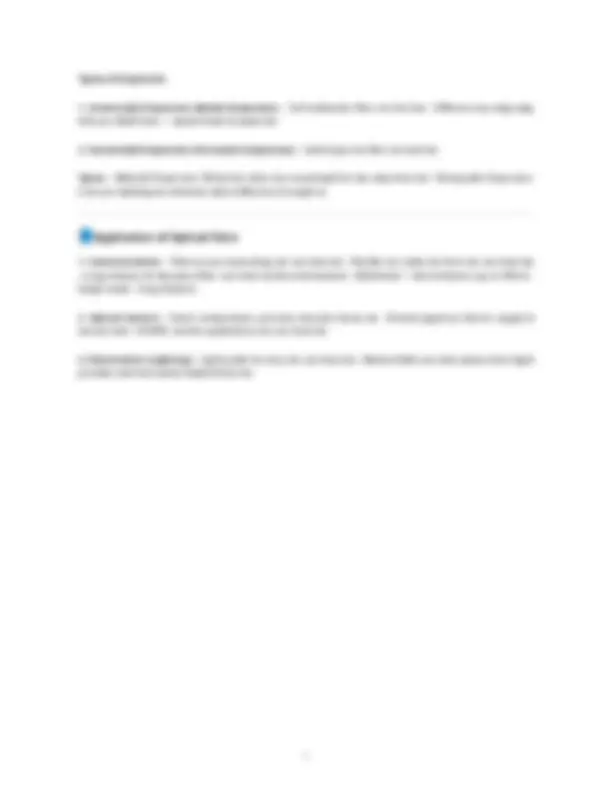





Study with the several resources on Docsity

Earn points by helping other students or get them with a premium plan


Prepare for your exams
Study with the several resources on Docsity

Earn points to download
Earn points by helping other students or get them with a premium plan
Community
Ask the community for help and clear up your study doubts
Discover the best universities in your country according to Docsity users
Free resources
Download our free guides on studying techniques, anxiety management strategies, and thesis advice from Docsity tutors
These notes are prepared for B.Tech 1st Year students (AKTU) covering Unit 4 – Fiber Optics and Laser from Engineering Physics. The content is written in very simple and easy-to-understand English, focusing on what’s important from an exam point of view. ✔️ Based on AKTU syllabus ✔️ Covers both theory and important numericals ✔️ Clear explanation of concepts like total internal reflection, types of optical fibers, laser properties, and applications ✔️ Short & long question coverage ✔️ Ideal for quick revision and scoring better in exams These notes are perfect for students who want to understand fast and write better answers in exams. Whether you're preparing last minute or revising concepts, this guide will help you succeed!
Typology: Study notes
1 / 5

This page cannot be seen from the preview
Don't miss anything!




Optical Fiber Notes (Full Hinglish Explanation - As Per Your Original Text)
Fiber optics ek technology hai jisme light ka use karke data transfer hota hai. Ye ek hair-thin glass fiber ke through light signals bhejne ka kaam karta hai. Ye bilkul waise hi data transfer karta hai jaise copper wire, bas yaha medium light hota hai.
Optical fiber teen layers se milke banta hai:
(i) Core: - Center part hota hai - Made of high quality glass/silica/plastic - Diameter: 10 to 100 μm - Refractive index zyada hota hai
(ii) Cladding: - Core ke bahar hoti hai - Made of glass/plastic - Refractive index thoda kam hota hai - Diameter: 100 to 250 μm
(iii) Sheath (Buffer Coating): - Protection aur strength provide karta hai - Plastic coating hoti hai
Optical fiber ka working principle hai Total Internal Reflection (TIR). Jab light ek dense medium (core) se rare medium (cladding) me jaati hai aur angle critical angle se zyada hota hai, to light vaapas reflect ho jaati hai — isse kehte hain TIR.
Light denser medium (core) se rarer medium (cladding) me travel kare. Angle of incidence > Critical Angle ho.
(i) Critical Angle: - Wo angle of incidence hota hai jisme refraction ka angle 90° hota hai.
(ii) Acceptance Angle: - Maximum angle jisme light fiber me enter kar sakti hai aur TIR ho sakta hai.
(iii) Acceptance Cone: - Light rays ka cone jisme jitne bhi rays fiber me enter karein wo propagate ho jaayein. - Cone ka angle = 2 × iₘₐₓ
(iv) Numerical Aperture (NA): - Fiber kitni light accept kar sakta hai, uska measure hai NA - NA = sin(iₘₐₓ)
(v) Fractional Refractive Index Change (Δ): - Δ = (μ₁ - μ₂)/μ₁ - μ₁ = core ka refractive index, μ₂ = cladding ka refractive index
V-number ek dimensionless quantity hai jo batata hai ki fiber me kitne modes propagate karenge.
Formula:
Agar V ≤ 2.405 → Single Mode Agar V > 2.405 → Multimode
Single mode fibre sirf ek hi mode (ray) ko propagate karta hai.
Core ka diameter: 5-10μm hota hai Cladding ka diameter: 50 to 125 μm hota hai V-number ka condition: V ≤ 2. Core aur cladding ke refractive index ka difference bahut hi chhota hota hai.
Advantages: 1. Attenuation (signal loss) kam hota hai 2. Dispersion bhi kam hoti hai 3. Bandwidth zyada milti hai 4. Long distance communication ke liye best hai
Disadvantages: 1. Iska banana (fabrication) mushkil aur costly hota hai 2. Transmission equipment mehenga hota hai jaise laser diode 3. Core diameter chhota hone ki wajah se handle karna mushkil hota hai
Multimode fibre kai modes (rays) ko ek saath propagate karta hai.
Core ka diameter: 20-100 μm Condition: V > 2. Core aur cladding ka refractive index ka difference zyada hota hai (single mode se)
Advantages: 1. Fabrication aasan aur sasta 2. Saste transmission equipment use hote hain jaise LED 3. Handle karna easy hota hai bade core ki wajah se
Disadvantages: 1. Attenuation zyada hoti hai 2. Dispersion zyada hoti hai 3. Bandwidth limited hoti hai 4. Sirf short distance ke liye suitable hai
Disadvantages: 1. High attenuation and dispersion 2. Bandwidth kam 3. Short distance communication ke liye hi thik
Core ka refractive index gradually decrease karta hai center se edge tak Sirf multimode fibre hi hota hai
Advantages: 1. Intermodal dispersion kam 2. Step index se zyada bandwidth 3. Optical source ke saath easily connect hota hai
Disadvantages: 1. Banana mushkil 2. Mehenga
(i) Attenuation: - Signal ki intensity ya optical power me kami - Jab light fiber me travel karti hai to thoda energy loss hota hai
(ii) Dispersion: - Light signal ka failna (broad hona) - Information transfer ki capacity ko limit karta hai
1. Absorption Loss: - Core material ya uske impurities light ko absorb kar lete hain - Light ki energy heat me badal jaati hai
Types: - Intrinsic Absorption: Jab pure material khud hi light absorb kare - Extrinsic Absorption: Jab impurities (OH ions, transition metals) absorb kare - Atomic Imperfection: Defects ki wajah se (jaise missing molecules)
2. Scattering Loss: - Fiber banate time molecular density ka uneven hona aur impurities ka freeze ho jana - Light scatter ho jaati hai, signal loss hota hai - Rayleigh scattering jyada hoti hai short wavelength pe 3. Bending Loss: - Fiber ke bend hone se signal leak ho jaata hai
Types: - Microbending: Chhoti chhoti bends (manufacturing defect se) - Macrobending: Zyada bend jisme curvature fiber se bada ho
Signal ka failna jab wo fiber ke andar travel karta hai Input pe ek saath enter karne wali rays output pe alag-alag time pe nikalti hain Ye signal ki clarity aur speed ko reduce karta hai
Types of Dispersion:
1. Intermodal Dispersion (Modal Dispersion): - Sirf multimode fiber me hoti hai - Different rays alag-alag time pe nikalti hain — signal broad ho jaata hai 2. Intramodal Dispersion (Chromatic Dispersion): - Sabhi types ke fiber me hoti hai
Types: - Material Dispersion: Refractive index har wavelength ke liye alag hota hai - Waveguide Dispersion: Core aur cladding ke refractive index difference ki wajah se
1. Communication: - Telecom aur networking me use hota hai - Flexible aur cables ke form me use hota hai